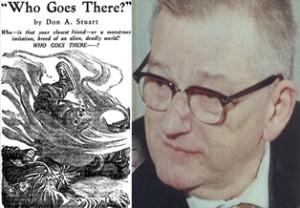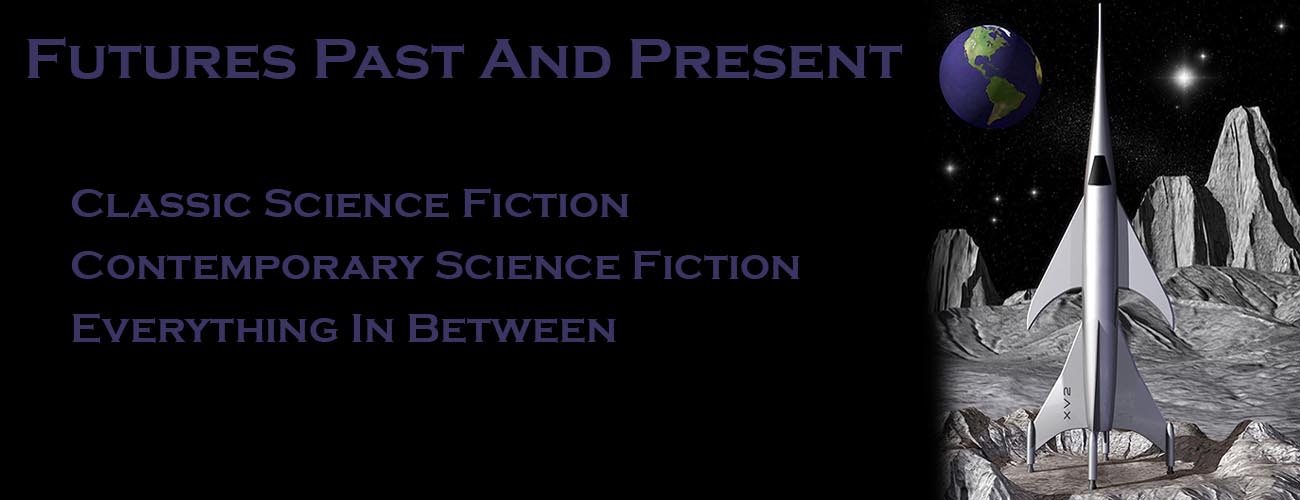On this day in 1910, John W. Campbell entered the world. It was a very different world when he left it on July 11, 1971. He envisioned much of that world and much of what followed his passing.
John Campbell was arguably the most influential science fiction and fantasy editor of the 20th Century. (Feel free to disagree in the comments.) Campbell began writing science fiction for the pulps. At first he published space opera under his own name. Not content to be a well regarded writer in the field, he began publishing moody, thoughtful stories under the name Don A. Stuart. He took the pen name from his wife’s maiden name, Dona Stuart. His most famous story under either byline is “Who Goes There?” by Don A. Stuart, which was filmed as The Thing From Another World (1951), The Thing (1982), and The Thing (2011).
In 1937, the editor of Astounding, F. Orlin Tremaine, had Campbell made his successor. Campbell didn’t have full authority to make decisions until 1938. Once he had full reign, the world of science fiction would never be the same. Campbell began to demand higher writing standards from his writers. Beginning in 1938 and continuing into 1939, he began to publish a number of new writers, such as Lester del Rey, L. Sprague de Camp, A. E. van Vogt, Robert Heinlein, Theodore Sturgeon, and Isaac Asimov. This is generally considered to be what has come to be called The Golden Age of Science Fiction. For a brief time, he edited the short-lived Unknown/Unknown Worlds, the only real rival Weird Tales had at the time. Unfortunately, Unknown was killed due to wartime paper shortages and never resurrected.
Until Galaxy and F&SF came along in 1950, Campbell was the undisputed top editor of the field. He could be a demanding editor. He had Tom Godwin submit four versions of “The Cold Equations” before he was satisfied, demanding that Godwin adhere to the mathematical restrictions he set up in the story. This is the story that Godwin is remembered for today.
 Campbell also assisted Cleve Cartmill in writing “Deadline”, which involved the detonation of an atomic bomb. This was in 1944. Campbell and Cartmill used information that was publicly available and in some cases had be for years to create the scientific principles used in their story. The result was a visit from the FBI wanting to know how Campbell had gotten classified information and demanded that the issue be pulled from the stands. Fortunately Campbell convinced them this wouldn’t be a good idea. (I read somewhere years ago about a woman working on a military base at the time not being allowed to read that issue of the magazine in the base library because her security clearance wasn’t high enough. So she went and bought a copy at the drug store. If anyone has a source for this, please let me know.)
Campbell also assisted Cleve Cartmill in writing “Deadline”, which involved the detonation of an atomic bomb. This was in 1944. Campbell and Cartmill used information that was publicly available and in some cases had be for years to create the scientific principles used in their story. The result was a visit from the FBI wanting to know how Campbell had gotten classified information and demanded that the issue be pulled from the stands. Fortunately Campbell convinced them this wouldn’t be a good idea. (I read somewhere years ago about a woman working on a military base at the time not being allowed to read that issue of the magazine in the base library because her security clearance wasn’t high enough. So she went and bought a copy at the drug store. If anyone has a source for this, please let me know.)
Campbell’s influence waned throughout the 1950s and 1960s as the field grew and a number of writers wrote in reaction to Campbell’s ideas and policies. He is not as highly regarded as he once was, and in some circles he is actively hated.
Personally, I like Campbellian science fiction. Maybe it’s because that’s what I read a lot of as an impressionable young teenager. Regardless of your opinion of him, he has had a lasting influence on the genre.
